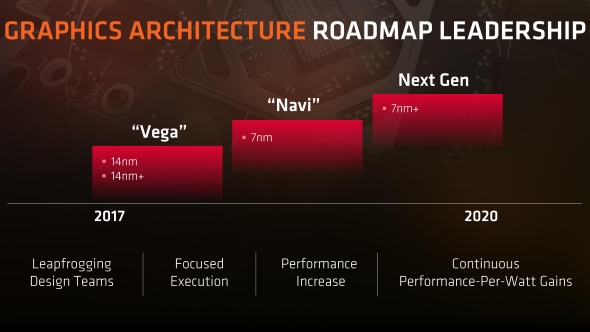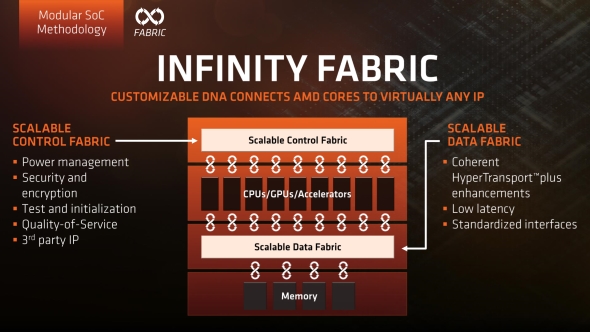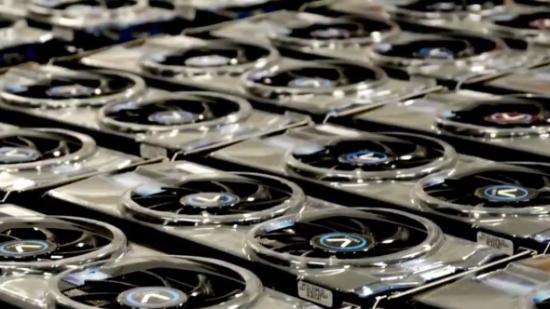We’ve heard reports (from somewhat questionable sources) claiming the AMD Navi GPUs will be “as bad as Vega”, but now we’re hearing from more reliable folk it’s potentially going to be a mainstream, RX 580 replacement, when it arrives next year.
Fudo is seemingly piling on the bad news for Radeon-hungry gamers at the moment. The other day he reported that the 7nm AMD Vega GPU is unlikely to ever power a gaming graphics card and now he’s stating that the following AMD Navi architecture will essentially just be an RX 580 level GPU and not a high-end graphics card.
Here’s our pick of the best graphics cards you can buy right now.
How really bad that is depends on whether you’re a glass half empty, or glass filled to a sensible level, with a quality single malt, where you can really get your nose into it and appreciate the differing levels of intense flavour on offer… kind of person.
A 7nm AMD Navi chip being as bad, or as good, as an AMD Vega GPU isn’t necessarily that big an issue… so long as it’s played correctly. If it performs as well as a 14nm Vega but with a smaller die area, and much lower power, that’s a good thing. Especially if they can also make it cheaper by separating the GPU from the previous gen’s expensive HBM2 ties.
And AMD have been in this position before. If they choose to make a genuine play for the mainstream market – instead of fanning the hype flames for GPUs that struggle to compete with the top-end of the competition – they could really clean up.

The report on Fudzilla is claiming that the 7nm Navi GPUs will perform around the same level as a top-end 14nm AMD Vega card, which would put it around the same level as a GTX 1080. By that time we’re expecting to have a broad range of next-gen Nvidia graphics cards at our disposal – we should have a GTX 2080 (or GTX 1180, or GTX 1111111111118, who knows at this point…) as well as GTX 2070 and GTX 2060 cards kitting out the top tiers of the gaming market.
If our performance expectations of the next GeForce gen are vaguely correct that would put the top AMD Navi card somewhere between the GTX 2070 and GTX 2060 level. And if they price them right that wouldn’t be a massive problem for them – that’s where the volume market is and selling at a price that gives the performance-comparable Nvidia cards problems could really fill their coffers.
And that’s all ignoring whatever the fluid cryptocurrency mining market is doing at that point. Would that we could just ignore it… would that we could.
So long as Navi’s gaming cards aren’t tied to the expensive HBM2 horse, using the more parsimonious GDDR6 memory architecture, they’ll have a good chance of giving gamers a well-priced, well-specced mainstream graphics card.
Without competition at launch Nvidia are likely to price the next-gen GeForce GPUs pretty high, giving them chunky mark-ups, but giving AMD a target price to get below. Though that will also give Nvidia a lot of wiggle room to drop their own prices in response.

But as we said, the red team have been here before. In previous generations AMD ceded the top-end of the graphics card market to Nvidia, choosing to pick their battles in the mainstream. But that’s when we’re talking about single-GPU cards.
In those earlier Radeon generations AMD’s only high-end option was to jam a pair of their mainstream GPUs onto a single slice of PCB, using a specific chip to provide Crossfire support between them. With Navi, however, they might well be able to squeeze two GPUs together into a single chip package.
With the impressive Infinity Fabric interconnect offering the potential to almost seamlessly connect the two discrete chips together there has been a lot of speculation about Navi being AMD’s first architecture to really take advantage of the Infinity Fabric. And by virtue of the the 7nm lithography the Navi GPUs can be small and still pack the mainstream performance punch. Even a pair of GPUs in one package still won’t necessarily demand a monster cooler, or their own thermonuclear reactor to power them, and could then provide serious gaming speeds.
There’s a lot of negativity around these days so I’m choosing to remain positive. Sure, 2018 might already be a graphical bust for AMD, but if they design and pitch Navi right they could still be onto a winner in 2019.
